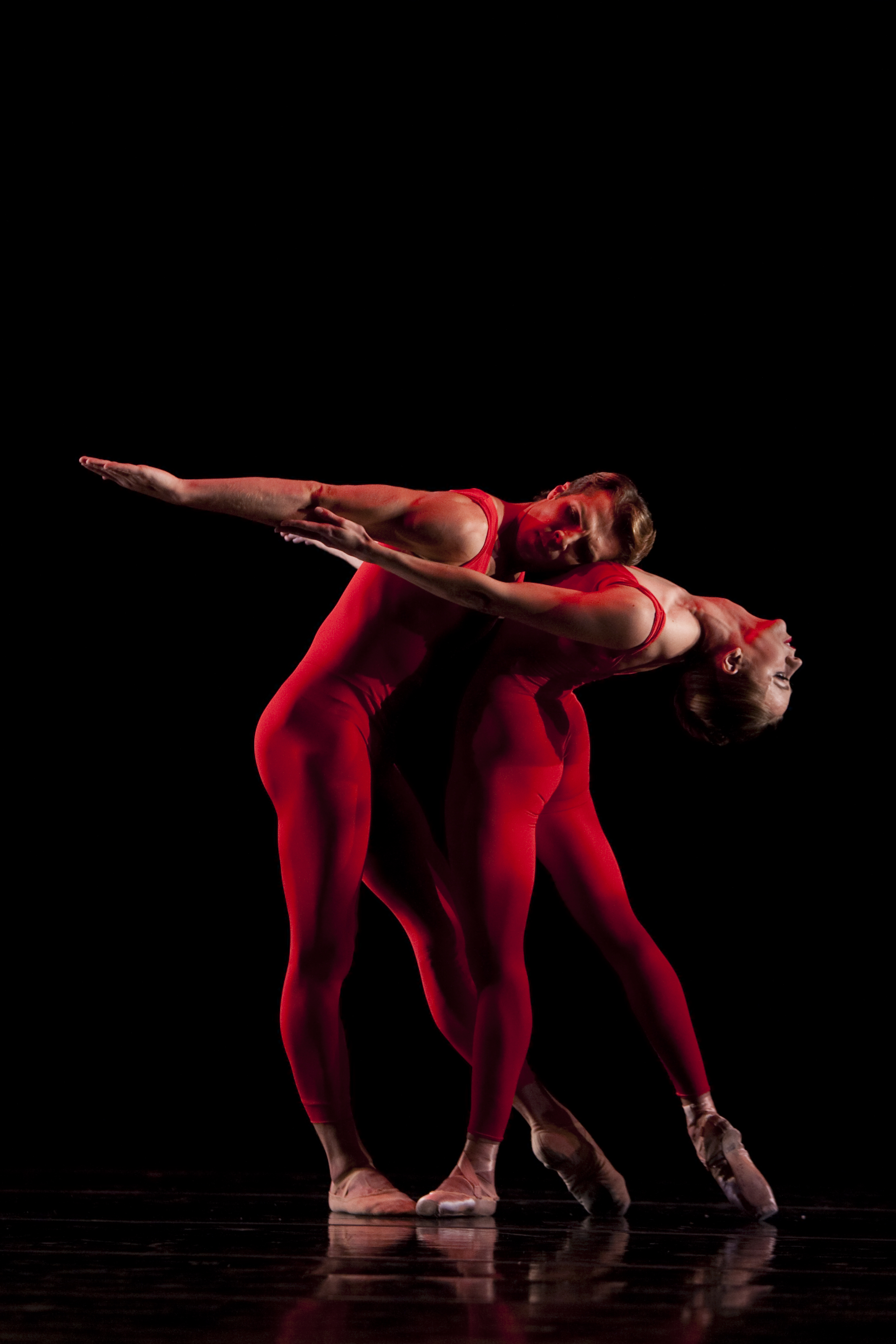
Pacific Northwest Ballet
Marion Oliver McCaw Hall
March 18 – 28, 2010
This is just a quick note about the unusual program of Ulysses Dove pieces running at Pacific Northwest Ballet throughout the weekend. I saw it on opening night — I imagine the program is just getting stronger and tighter as the nights progress.
An African-American choreographer working in New York City in the 1970s-1980s, Ulysses Dove seemed to be the man who would be able to effectively transfer the exuberance and technical feats of Alvin-Ailey-style dance/theater to the ballet stages. His early death from AIDS was a great loss — and it’s a fantastic thing that Peter Boal is dedicating so many resources towards celebrating the work of this unique voice in dance.
But can PNB dancers truly handle it? And bring the pieces to life? During “Vespers,” featuring six women with straight-backed chairs, it was hard not to wince at the unsatisfying jumps and turns and direction changes. It is SO easy to see miscues in the ensemble work – one off dancer and the whole thing gets thrown. It’s a beautiful, stirring work but I am not sure it belongs in the repertory of a barely-ethnic ballet company. The women just looked so pale and spindly and weak on opening night. Most disappointing, it seemed the steps had no sense of finish to them and the dancers’ eyes didn’t seem to be able to fully focus — their gazes felt hectic and hollow.
In contrast, “Red Angels,” a tour de force quartet for two men and two women, looks totally fabulous on PNB’s ballet dancers. Especially the opening night cast– Ariana Lallone, Olivier Wevers, Lesley Rausch and Lucien Postlewaite – oh my god. They burned up the stage with full-out attack of the movements, all in the most beautifully straight-forward style. If you weren’t quite sure why Olivier Wevers and Lucien Postlewaite are such superstars in town, stop by and see them in this. Wevers is invincible, Postlewaite is all elegant strength — and their partners match them damn close. What an astonishing feat of technical success and dramatic strength – jeezus.
“Suspension of Disbelief,” by Victor Quijada, had lovely production values, but I could not find a center there (even with Wevers and Postlewaite in it!!) It just rolled on and on for me like a sea of stylized traffic. Yes, its slouchy vernacular speaks of humanity, but it gives it no clear face.
Sadly, I couldn’t get any satisfaction from “Serious Pleasures,” Dove’s beautifully constructed howl to carnal desire. I kept wishing it were even more stylized (some parts are so close to Fosse’s work in “Chicago” ) or more nuanced. Every scene, every moment showed lust in its fullest range of motion (hips swinging, jutting, heads thrown, partners clutching). It became repetitive and seemed to miss such a great opportunity by neglecting those moments when lust and carnality suffuse the smaller, daily motions in life. (Think of Madonna coyly sashaying down the street in her “Secret” video. She’s been infused with sex — it’s swelled her step — but it’s also clear that it’s hardly a lasting state; she’ll be looking for more in no time.) What I wouldn’t have given to see some of those pauses between all the hookups. Or maybe that was the point? To show how psyches hammered by constant longing and seduction and ravishment result in a panorama of numb animal shapes?
But that’s just me. All in all, I urge everyone to check out this daring, fascinating bill.